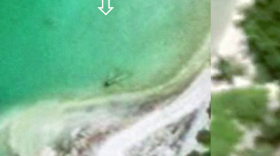-
On this edition we talk with Ellen Dymit, an OSU researcher on a new study which explains how cats in the rainforest avoid each and competition for food. Plus, we talk with Esther Tishman of Liberty Walks who has completed her walk across America to promote civility.
-
Oregon is the Christmas tree capital of the country, producing over 3 million of the festive evergreens every year. And when Christmas tree growers have a concern with their crops of noble or Douglas firs, they call Oregon State University’s Priya Rajarapu. She’s the state’s Christmas tree specialist.
-
On this edition, we talk with Professor Nick Allen who led a national study with Google which suggests smartphone use does not negatively impact well-being. And then we check in with Esther Tishman of Liberty Walks on her cross country journey to promote civility.
-
A research summit in Newport has been postponed because of the federal government shutdown.
-
This summer, Gov. Tina Kotek issued an executive order mandating all 197 Oregon school districts ban the use of personal electronic devices during the school day. Districts still have a little time to adopt their phone-free policies –but some have already made the switch.
-
Tillamook-based Aerostar quietly supports space missions with NASA-certified tech, including high-altitude balloons and the only air barrier approved for the ISS — a surprising aerospace hub in Oregon's dairy country.
-
On this edition we talk with Ramón Alvarado and Phil Colbert of the University of Oregon about the ethical and practical considerations of AI in our society.
-
The University of Oregon has been chosen as a hub to study post-fire landslides, hurricane-induced flooding, and related natural disasters.
-
Doctorate students at Oregon State University have conducted an experiment to see how houses in coastal communities hold up to storm surge.
-
The Oregon coast’s only wooden intact lighthouse was reunited with its lantern Tuesday, as the $1.8 million restoration of the Yaquina Bay Lighthouse nears completion.
-
A new exhibit opens this week at the Springfield History Museum. “PosSUBilities: 75 Years of the Springfield Utility Board,” highlights the development and impact of the Springfield Utility Board on the community.
-
We talk with Dr. Richard Pettigrew of the Eugene-based Archeological Legacy Institute about the possible resting place of Amelia Earhart's plane and their plan to go to the atoll where the object may be. We also talk with KLCC GM, Jim Rondeau, about congressional cuts to public media and impacts to the station.















